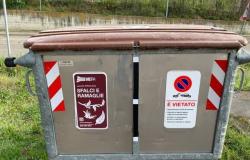«I no longer know how to say it: rather than dramatically increasing, immigration is stable, even slightly decreasing, and the request for asylum is not the main reason for those arriving. But the false representation of the migration phenomenon influences the decisions we make.” In large and small ways, from the Government to individual communities such as that of Parma: Samuele Molli, sociologist and researcher at the University of Milan, who analyzed what emerges from the 2023 Immigration Statistical Dossier in a meeting organized in the Province by Cisl and Anolf, knows this well Parma.
The dossier is created by the Idos Study and Research Center in collaboration with the Confronti Studies Center and the San Pio V Institute of Political Studies: it photographs the flows and presences in Italy, the “laws” by theme – from work to rights, from visas to families, up to the point of irregularity – and then declines them region by region. And in Emilia Romagna – we read in the chapter promoted by Cisl and CGIL – Parma maintains its primacy: that of the province with the highest incidence of foreigners on residents, i.e. 15.1%, with an increase of 2.3% compared to 2021.
Looking further into the data, some of the stereotypes cited by the sociologist are already being undermined: 50.4% are women; of the 48,265 non-EU residents out of the 68,298 total, 69.1% are classified as long stays; those who arrive do so for work in 23% of cases, in 49.8 it is for family reunification, 16.8% of people are entitled to protection (a large number are Ukrainian refugees) and 3.6% are asylum seekers. Furthermore, the regional trend says that the largest communities are Romanian (growing), Moroccan and Albanian.
On the other hand, Angela Calò, deputy general secretary of CISL Pama Piacenza, had already made an invitation to distinguish between perception and reality in her introduction. Combined with that of stopping thinking about “emergency rules when the phenomenon has now been around for twenty years”. Just as Nabila Mhaidra, new president of Anolf Parma, was heartfelt: «Today the word immigrant gives rise to a sense of insecurity which is a gut reaction and does not help those who must and want to integrate».
Another figure is provided by the Welfare Councilor of the Municipality of Parma, Ettore Brianti: «We are in first place for the percentage of immigrant people at a national level: it means that this province welcomes us. However, integration problems persist and it is worrying from a cultural point of view.” «Reception facilities such as the temporary center in Martorano (in containers, managed by the Civil Protection on behalf of the Prefecture, ed.) are not good but it is not easy to find alternatives. Few funds arrive at government level, we allocate some because we believe that this is the future, not “us against you”: by combining reception, training and work, Parma can be a laboratory for testing concrete immigration policies that work.”
The thesis of the need for immigration has now been validated – “positive immigration” as defined by the President of the Parma City Council Michele Alinovi – to meet the manpower needs of Italian companies. A theme that is also associated with that of the birth rate decline. «But it’s an e-commerce company approach: you move parcels. Or, when we say that 200 thousand are needed in agriculture, we are talking about kilos of manpower – comments the president of the Province Andrea Massari -. We should think, instead, that those who arrive have a life plan and want to improve their condition, like all of us.” Returning to the venue, he invites «a sense of responsibility: more than half of the Municipalities have never managed a single refugee in 20 years. In the absence of a national policy, everything is left to the discretion of the mayor of the individual community. And it’s not the solution.” The most pressing need is housing. Because that work is possible is what emerges again from the Dossier. «There are 2.5 million employed foreigners who generally work in the “5 P” jobs: heavy, dangerous, low paid, socially penalised, precarious. Meanwhile, the CISL report tells us that there is no Made in Italy agri-food supply chain in which migrants are not relevant”, explains the sociologist Molli. Who then underlines the 8 amnesties in 24 years (“punctual like the football World Cup”): “They arrive when companies point out the need to regularize their workforce. 70% of foreigners regularly present in Italy have gone through a period of irregularity: the fault of poorly regulated entry policies, the long periods to obtain the renewal of the residence permit. Or the visa problem.” The head of the refugee and asylum seekers section of the Parma Immigration Office, Marta Munafò, makes this clear. «Travelling is not easy for those who were not born in the right country: passport apartheid exists. Who is Italian has 134 countries available to enter without a visa, for a Somali, an Afghan or a Syrian only 3 or 4: for them it is impossible to travel legally. Hence the boats, the smugglers, the aid at sea, the safe port.” In the overview you give of the existing legislation, you say that the «Dossier» should help professionals to address the issue «with pragmatism and not with emotion, looking with foresight to future times». And in the meantime you raise serious doubts about the actual applicability of the Italy-Albania agreement to divert certain types of migrants there.”
A concrete example of feasibility is given by the president of the Cna Parma Paolo Giuffredi. He talks about those 13 foreign boys involved in a metal carpentry course which included the study of the Italian language and internships in companies, who had the only burden of making a fixed-term job to test their skills. «Today everyone is working and we have solved 26 problems at once: theirs and that of the companies».
Chiara Cacciani



